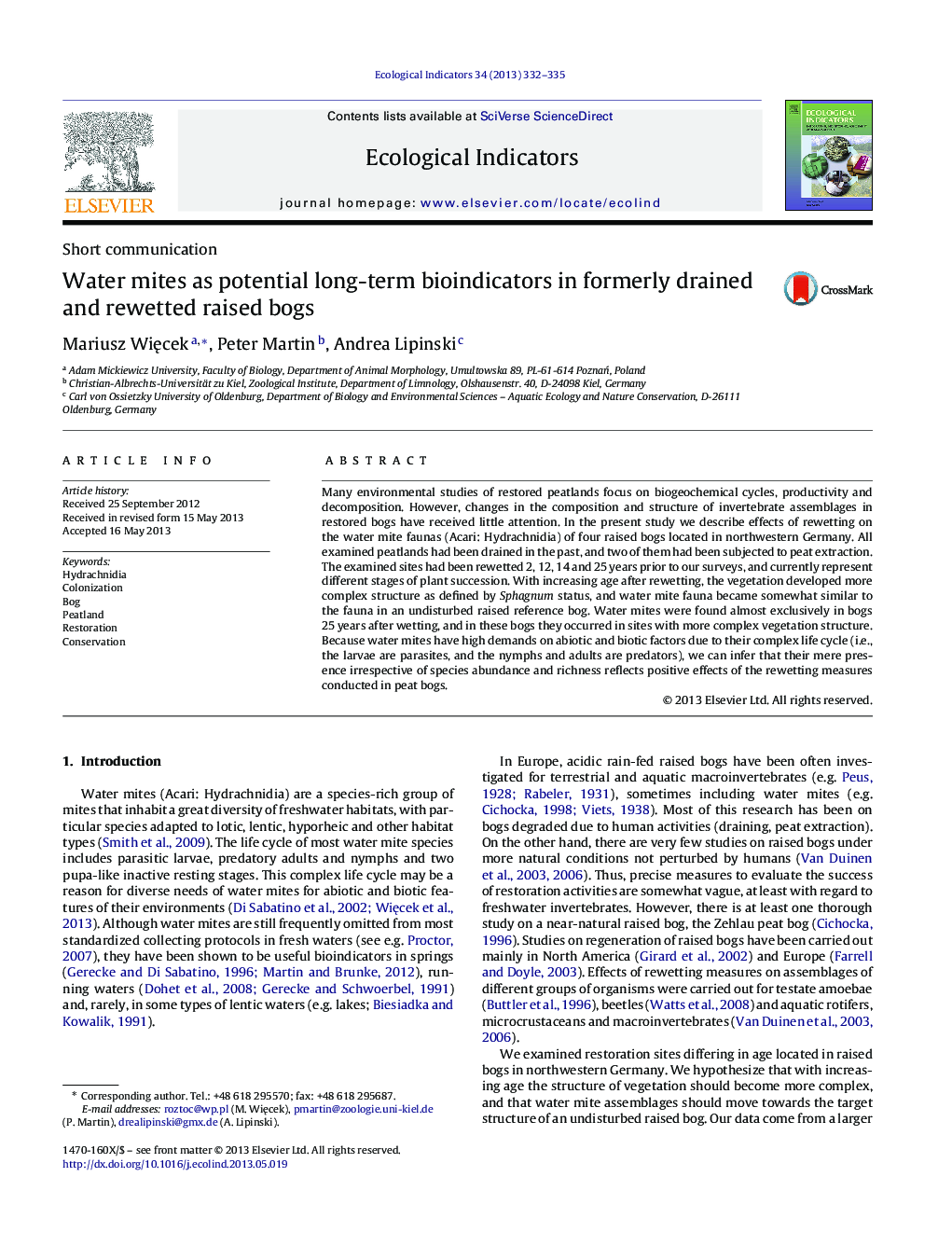| Article ID | Journal | Published Year | Pages | File Type |
|---|---|---|---|---|
| 6295289 | Ecological Indicators | 2013 | 4 Pages |
Abstract
Many environmental studies of restored peatlands focus on biogeochemical cycles, productivity and decomposition. However, changes in the composition and structure of invertebrate assemblages in restored bogs have received little attention. In the present study we describe effects of rewetting on the water mite faunas (Acari: Hydrachnidia) of four raised bogs located in northwestern Germany. All examined peatlands had been drained in the past, and two of them had been subjected to peat extraction. The examined sites had been rewetted 2, 12, 14 and 25Â years prior to our surveys, and currently represent different stages of plant succession. With increasing age after rewetting, the vegetation developed more complex structure as defined by Sphagnum status, and water mite fauna became somewhat similar to the fauna in an undisturbed raised reference bog. Water mites were found almost exclusively in bogs 25Â years after wetting, and in these bogs they occurred in sites with more complex vegetation structure. Because water mites have high demands on abiotic and biotic factors due to their complex life cycle (i.e., the larvae are parasites, and the nymphs and adults are predators), we can infer that their mere presence irrespective of species abundance and richness reflects positive effects of the rewetting measures conducted in peat bogs.
Related Topics
Life Sciences
Agricultural and Biological Sciences
Ecology, Evolution, Behavior and Systematics
Authors
Mariusz WiÄcek, Peter Martin, Andrea Lipinski,
